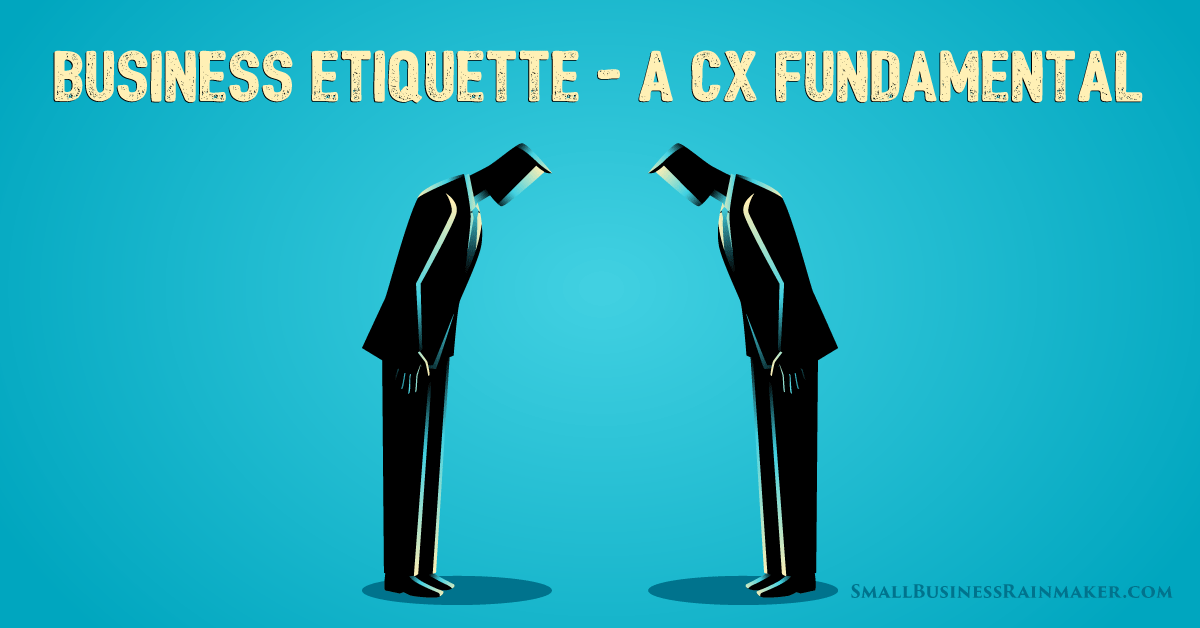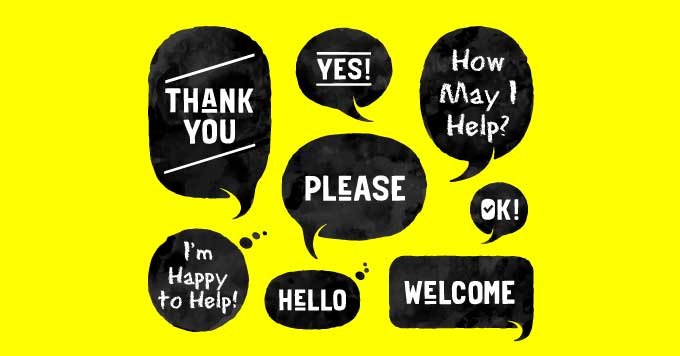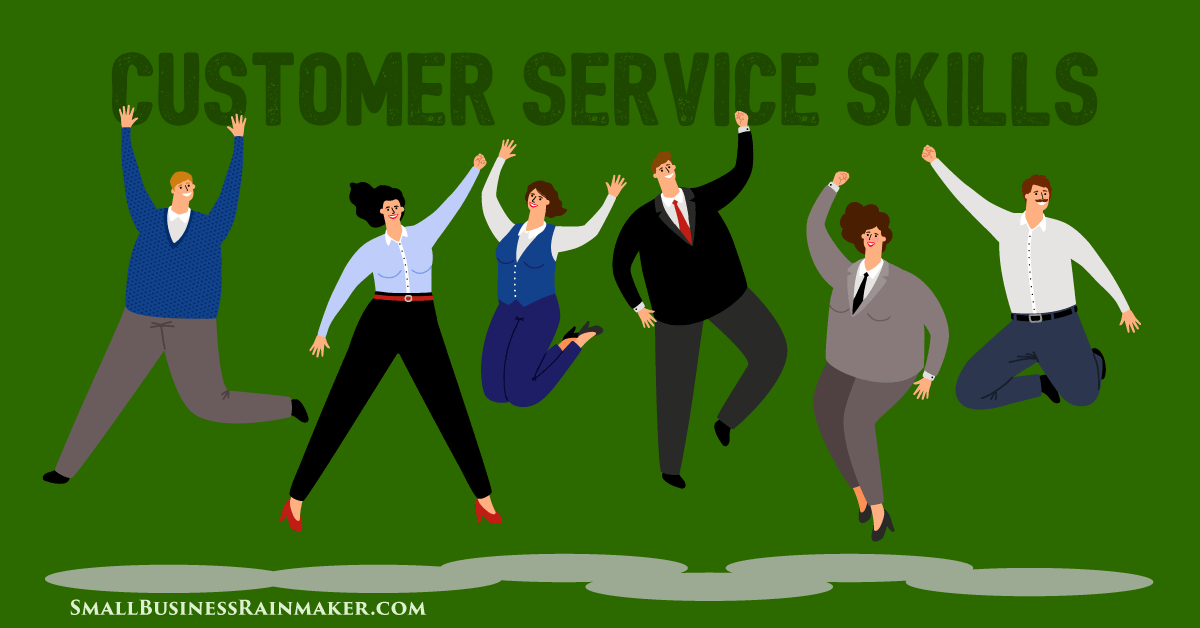
No question, the user experience (UX) or customer experience (CX) is the most important component in business. If you don’t treat a customer right, they may not come back, and they’ll certainly tell anyone who will listen how badly they were treated by you. Your sales will plummet.
Top customer service quality will not be realized without good manners, practiced by every one of your employees. Not enough businesses pay attention to this, and it is negatively impacting the health and sustainability of their companies.
Call it customer service etiquette or business etiquette or netiquette (for social media); it all boils down to empathy, politeness and courtesy.
Do you have robust customer service initiatives in place for your business?
How Customer Service Etiquette Works
I’m sure you get frustrated and turned off by businesses that provide shoddy customer service. Yet many of you do the same kinds of things to your customers. Simply put, you need to treat people they way you’d like to be treated.
Good manners and courtesy are driven by empathy and Emotional Intelligence (EI), which is the ability to identify, understand and manage your own emotions and those of others.
One of the things prompting me to write this article was the process involved with developing CareerBrandVideos™, a custom video program for job search, career and small business. As my collaborators and I were pulling together the many pieces, I was keenly aware how empathy played an important role. For anything that would touch the customer, we put ourselves in their shoes, walking with them through the process.
Our thoughts included:
- Are we asking them questions in the worksheet in such a way that will motivate them to provide information that will best represent who they are?
- Are we allowing people enough time to complete the worksheet in a meaningful way?
- Are each of the components cohesive and do they all make sense?
- Will people at any professional level and with any level of intelligence be able to do the work required?
- Did we explain everything clearly enough so they wouldn’t fumble and feel overwhelmed?
Daniel Goleman, a pioneering psychologist who helped to popularize Emotional Intelligence, identified the 5 key elements that make up EI. The better you manage each area, the higher your EI:
- Self-awareness
- Self-regulation
- Motivation
- Empathy
- Social skills
And, he offered 3 steps to strengthen empathy:
- Active listening. Being genuinely interested in what someone else says and feels helps build strong connections.
- Open up. Share a struggle you faced and your emotions about it to take connections to a deeper level.
- Try well-wishing. Extending well wishes to others brings compassion to ourselves and those around us.
How to Improve Your Business Etiquette

Go out of your way to make the user experience stellar and memorable in a positive way. Get ALL of your customer-facing employees on board with best practices and monitor them to be sure they don't slip.
And be aware that nuance is important. It always pays to be very careful with how you word things and express yourself in all communications with customers.
In-Person Interactions
Our manners tend to be better when we’re facing people in real time, than when we’re on social media and the phone. Most of us don’t want to get that pained look from someone who’s been slighted or mistreated. It’s a look that we can only experience when we’re face-to-face with someone.
Even so, many business owners and their staff don’t measure up when they’re face-to-face with customers. Understand that you can’t assume your people were brought up with good manners. You need to set customer service standards and train everyone to be sure every customer will receive top quality service.
Modern manners expert Sharon Schweitzer describes 5 ways "to show professionalism, patience and dedication to each customer you meet":
1. Listen attentively to customer’s concerns.
Give them the chance to fully express their concerns or inquiries. Ask them questions to get as much info as you can from them. And don’t talk over them! Let them finish what they are saying or asking, even if you know the answer right off the bat.
2. Always remain professional through every interaction.
One of my pet peeves is when staff at a place of business chit-chat with each other while ignoring a waiting customer. Sharon advises focusing on catering to the customer and avoiding talk about personal topics.
3. Be truthful.
Always be honest about the products and services you’re selling. Don’t make a claim about a benefit to the customer just to close the sale quickly. Be willing to address their concerns and provide other options.
4. Preparation is key.
Stay up-to-date about every aspect of your company and its products and services. You’ll be better able to inform customers and provide better service.
5. Remain confident.
Even if you’re new to selling this product or service, stay calm and positive. If you can’t answer a customer’s question, politely excuse yourself and find someone else nearby who can help you. Don’t leave the customer with their questions and concerns unanswered.
And Don’t Forget Appearance
One aspect of workplace etiquette that doesn't always receive priority treatment in the workplace is good hygiene and grooming. Trailblazing small business owner Nic Cober stressed the importance of employee appearance:
"In customer service there is a very explicit assumption that when you take care of your appearance, you will care about the quality of your work or product as well. However, it is the employer's responsibility to make these seemingly implicit etiquette rules clear rather than believe that ‘everyone knows.’
The biggest takeaway about etiquette and customer service training is the old adage: ‘Don't assume.’ It is the employer's responsibility to define the norms and expectations within the business. The best companies leave nothing to chance so that even Emily Post herself would return as a loyal customer."
Phone Communications
First, establish a script for answering the phone that includes the name of whoever is answering, the company name, department (if applicable) and a question like “How may I help you?” Keep it brief but meaningful.
Then, follow these 11 essential rules of phone etiquette outlined in a Hubspot article, some of which may be obvious, but should be noted:
- Answer the call within three rings.
- Immediately introduce yourself.
- Speak clearly.
- Only use speakerphone when necessary.
- Actively listen and take notes.
- Use proper language.
- Remain cheerful.
- Ask before putting someone on hold or transferring a call.
- Be honest if you don't know the answer.
- Be mindful of your volume.
- Check for and respond to voicemails.
Emailing
Given that businesses spend an estimated 25% of their work time mired in email – sifting through emails received and sending out email – you need to get your email communications right.
An Inc.com article cites career coach Barbara Pachter's "Essentials of Business Etiquette", including:
- Include a clear, direct subject line.
- Use a professional email address.
- Think twice before hitting 'reply all.'
- Include a signature block.
- Use professional salutations.
- Be cautious with humor.
- Know that people from different cultures speak and write differently.
Here are some things I’ll add to her list, based on dicey emails I’ve received:
- Do not use your phone for business email messages.
- If you've been exchanging email on a specific topic with a customer, respond within the same stream so your customer can look back and follow the thread.
- If you’re notifying or reminding your customer that they need to take a particular action, don’t state that in a command. Instead of saying “You have to send me XYZ by the end of today,” say, “A gentle reminder that we’ll need XYZ by the end of today.”
And there are assumptions you may be making about email that can really slip you up, as I noted in a post about email misconceptions. Don't assume that:
- Your email message will convey tone and nuance.
- Your email messages will always reach their destination.
- Your intended recipient is the only one who will read your email.
Company website
Many small businesses have a Facebook page instead of a website. By all means, stay active on Facebook (and other social media), but you’ll look more professional if your home base is a designated company website.
Mandatory website pages include:
A Home page that:
Conveys what you offer in some detail and is written in a way that entices people to want to know more about your business, products and services. This will influence them to browse through other pages on your site to learn more.
Customer testimonials are an excellent thing to include on the home page.
A Contact Page that:
- Notes your business hours.
- Includes your business phone that has voicemail, if you’re set up this way.
- Tells people how soon they can expect you to respond.
- Includes a contact form with space to leave a message.
An About page that:
- Lists the principals and notable employees (with headshots), with a brief but vibrant bio for each.
- Provides a history of the company and its evolution.
Products/Services or separate Services and Products pages that:
Display the various products and services you offer (with images and other visuals), and with content that answers questions potential buyers may have.
The things I suggested above are by no means an exhaustive checklist, but they’re a good start. They will most certainly up your game and result in much happier customers, who will want to keep coming back.
Final Thoughts on Business Etiquette
Don’t assume that all your employees will treat your customers the way you would. Customer-facing office etiquette requires training and standards. It’s up to you to put them into place.















Leave a comment